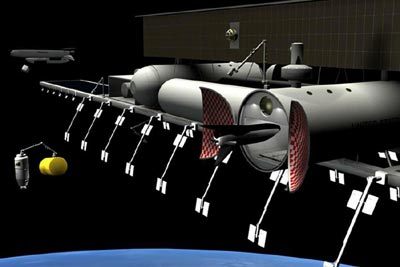Dec 6, 2007
Aerospaceplanes and space solar power
Posted by Ole Peter Galaasen in categories: habitats, space

Supplying a substantial percentage of America’s future electrical power supply from space using SBSP (space-based solar power) systems can only be expressed as a giant leap forward in space operations. Each of the hundreds of solar power satellites needed would require 10,000–20,000 tons of components transported to orbit, assembled in orbit, and then moved to geostationary orbit for operations. The scale of logistics operations required is substantially greater than what we have previously undertaken. Periodically, industrial operations experience revolutions in technology and operations. Deep sea oil exploration is an example. Within a couple decades, entirely new industrial operations can start and grow to significant levels of production. The same will happen with space industrialization when—not if—the right product or service is undertaken. SBSP may be the breakthrough product for leading the industrialization of space. This was our assumption in conducting the study. As the cost of oil approaches $100 a barrel, combined with the possibility of the world reaching peak oil production in the near future, this may turn out to be a valid assumption.
Source: The Space Review







